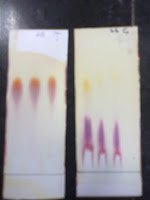Have you ever pulled your TLC plate out of the developing tank, only to realize that your Rfs are out of whack? Or the analyte you were expecting to see is missing or still overlapping another component? Time is wasted. Emotions flare. Did you forget something? Are the plates any good? Did you pick the wrong profession?
Many factors affect your results in chromatography. They include:
- layer thickness
- particle size and pore size of adsorbent
- activation of adsorbent
- mobile phase (quantity and freshness)
- equilibrium inside the developing chamber
- sample (size and application technique)
- accurate Rf measurement
All of these controllable variables are important. To save time, you may be tempted to focus on the most influential and leave the others alone. However, some applications are more sensitive to slight variations. It’s better to invest time in the beginning to make sure every variable is just right. You’ll save time and energy—and will rest assured you’re indeed in the right profession.
That’s why we’re publishing a series of articles to explain these contributing factors in detail. (We know how much our analytical audience loves details!) Our goal is to broaden your overall knowledge in chromatography and help you achieve more consistent results.
Stay tuned…and happy chromatographing!





